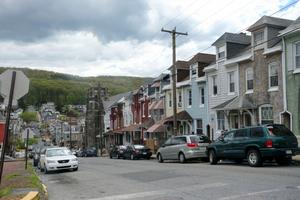This story first appeared in Talk of the Town, a weekly newsletter by Spotlight PA’s State College regional bureau featuring the most important news and happenings in north-central Pennsylvania. Sign up for free here.
STATE COLLEGE — The American Rescue Plan Act, a $1.9 trillion federal stimulus bill, was signed into law in March 2021. Over a year later the emergency funding is still trickling down to help offset negative impacts of the COVID-19 pandemic.
The act, also known as ARPA, included $350 billion to assist state, local, territorial, and tribal governments with public health measures as well as economic recovery.
Reporting on Pennsylvania’s share of that federal relief in September, the state Department of Community Economic Development said $6.15 billion of the recovery funds has been allocated to counties, metropolitan cities, and local government units.
With an amount of emergency funding this significant, keeping track of how those tax dollars are spent can feel like a tall order. Here are some basics about the relief money and how to dig into the ways it is being spent:
How much recovery funding did my municipality get?
All of Pennsylvania’s 67 county governments and 38 of its metropolitan city governments — including State College, Altoona, and Williamsport — received funds directly from the U.S. Department of the Treasury.
Local governments that are not metropolitan cities or counties are referred to as non-entitlement units of local government and got their allocations through the commonwealth.
The DCED said Pennsylvania municipalities received their second and final payments in September.
What can municipalities do with the funding?
Eligible uses of the Coronavirus State and Local Fiscal Recovery Funds, which is how the U.S. Treasury labels the money, include efforts that:
“Support public health expenditures” or “address negative economic impacts caused by the public health emergency,” including assistance to households, small businesses, and nonprofits, or aid to impacted industries such as tourism, travel, and hospitality;
Provide “premium pay” to eligible workers performing essential work during the COVID-19 public health emergency;
Replace lost revenue in the public sector;
And “invest in water, sewer, and broadband infrastructure.”
Depositing this funding into any pension fund or offsetting a reduction in net tax revenue with this funding in states and territories is prohibited.
Municipalities must establish how they will use their allocations by the end of 2024. The funds must then be dispersed by the end of 2026.
How to keep track of recovery fund spending
State, local, and tribal governments are required to submit one or more of three types of reports to the U.S. Treasury, depending on population size and the amount of their allocation.
While these reports are considered open records, meaning the public can request to see them, the information can vary in quality and comparability. Try these handy tools to assist with tracking.
Pandemic Oversight, part of the U.S. government’s Pandemic Response Accountability Committee, publishes an interactive dashboard on the State and Local Fiscal Recovery Fund, where funded projects can be found.
The Local Government ARPA Investment Tracker — published by Brookings Metro, the National Association of Counties, and the National League of Cities — compiles reports submitted by local governments to the U.S. Treasury.
The National Conference of State Legislatures maintains an interactive dashboard that exclusively covers state government recovery fund allocations.
Because municipalities have at least another two years before they finalize all the decisions on how to spend the recovery money, the public still has time to provide input and participate in those conversations. Finding out how much your municipality has received with the tools above and attending a public meeting where spending plans are discussed are great places to start.
SUPPORT THIS JOURNALISM and help us reinvigorate local news in north-central Pennsylvania at spotlightpa.org/statecollege. Spotlight PA is funded by foundations and readers like you who are committed to accountability and public-service journalism that gets results.
